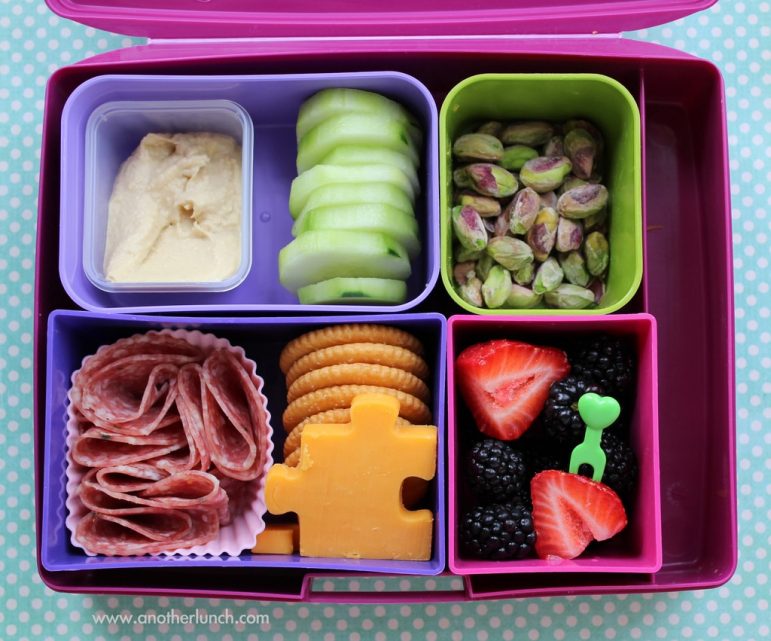Want to know if times are tough? Look at the number of kids eating school lunch. Birmingham area schools report that since the economic crunch, fewer children are brown bagging it. School nutritionists say for the price, you can’t beat school lunch. But is cheaper better? Gigi Douban has the latest installment in our series “Making Do: Alabama’s Economy”.
Adam Brown can count on one hand the number of times he’s eaten school lunch. He wears this around like a badge. And rightly so. Adam is in the fifth grade, so let’s just say he’s turned down more than his fair share of crispitos. His parents pack him a lunch. Now, Adam is a burly boy, and his lunch is no assemblage of birdseed. Here’s what was in his lunchbox one recent afternoon.
“A deli sandwich, cheese stick, Cheetos, and a Cosmic Brownie…”
And a juice pouch, two apple flavored Jolly Ranchers and a lifesaver. That deli sandwich was turkey and cheese, with mayo. Adam says it’s not that school lunch tastes bad. It’s just…
“I think they give a small portion.”
He says even the baked potatoes appear to have shrunken from what they were last year. And they may have. School systems have been shrinking portions to keep up with the rising cost of food, to cut down on waste and to meet dietary guidelines. Even so, Adam appears to be in the minority among Birmingham area students. School officials say this school year, more kids are buying school lunch.
The reason?
“For $1.75 to get a hot, nutritious lunch, you cannot compare. It’s a win-win situation.”
Sonja Anthony is director of the Child Nutrition Program in Jefferson County schools. She says that not only are more families applying for free and reduced price lunch status, they’re seeing more of the students who pay full price–$1.75 in elementary school, and $2 at high schools. Sarah Robinson made the switch this year for her 6 year-old son Thomas.
“When Thomas started kindergarten, I though I’ll be the good mom and make lunches for him because that’s what we do. and a friend of mine said, ‘Sarah, you will not be able to make lunch for what you can buy it for at school’. And so I though about it and though, you know, you’re right.”
It’s hard to say which lunch is consistently cheaper. But a school district in Virginia last year published a cost analysis that showed home lunches to be $1.34 more expensive than school lunches. But is cheaper better nutritionally?
Let’s look at Katie Durrett’s lunch tray. Katie is also in the fifth-grade, but unlike Adam Brown, she is a school lunch loyalist.
“Right now I’m having a potato…”
188 calories.
“Corn dog…
210 calories, 6 grams of fat.
“Apple…”
64 calories, .2 grams of fat.
“And milk.”
102, 2.4 grams of fat.
And Katie has a pat of butter on her tray. The grand total: 672 calories and 13 grams of fat. Which, as it turns out, is much lower in fat and calories than Adam’s home lunch. His came in at 830 calories and 31 grams of fat.
But as most mothers will tell you, preferences for certain foods seem almost hard-wired in children. Chicken nuggets, burgers, pizza. Lunchroom managers say those are the items that sell. Sonja Anthony is constantly on the lookout for products that taste good and are lower in fat.
“Because let’s face it, if I give them a low-fat hot dog and it tastes like a rubber band, the children aren’t going to eat it. And it does not take long, they’re very perceptive…and it’ll get down the grapevine, ‘you don’t want the hotdog, it tastes like a rubber band.”
She describes children as “end users” and “customers”. Her staff periodically rolls out new products to a limited group of students, one grade at one school, for example. One week it was orange milk. Then the students taste and rate it. Sometimes just changing the look of an item can drive up sales. They did it with pizza recently, trying out a round pizza instead of the usual square.
“Well my goodness, managers were not prepared for the onslaught of ‘I want that, I want that.'”
Here at Bragg Middle School, where a majority of the school’s 900 students eat school lunch, lunchroom manager Cindy Stephenson is tidying up the ice cream case. She says this is where parents are drawing the line on spending.
“In the last month even our extra sales, they call that a la carte, ice cream, cups of juice dropped off. So it seems like parents are maybe cutting down on their extras.”
And from a fiscal and health perspective, that may just be for the best.
~ Gigi Douban, March 26, 2009.

